

Max Davies
2026 Toyota HiAce review
22 Minutes Ago

News Editor
Renault’s new flagship is a mid-sized coupe SUV that will offer a 224kW plug-in hybrid powertrain.
The Renault Rafale slots in above the Austral and Espace crossovers, with which it shares its CMF-CD architecture. These underpinnings are also shared with the Nissan X-Trail and Mitsubishi Outlander.
Renault says it has enhanced the platform over the two years since it introduced the Austral.

European deliveries will begin in the northern spring (our autumn) of 2024. Renault Australia says that should this be made available to right-hand drive markets, it will analyse a business case for it.
Rafale is a French word meaning wind, and has historical significance for Renault: the Caudron-Renault Rafale was an aircraft that reached a record-breaking 277mph (446km/h) back in 1934.
The flagship SUV measures 4.71m long, 1.86m wide and 1.61m tall on a 2.74m wheelbase, which puts it around the size of a Skoda Kodiaq and therefore at the larger end of the mid-sized segment.
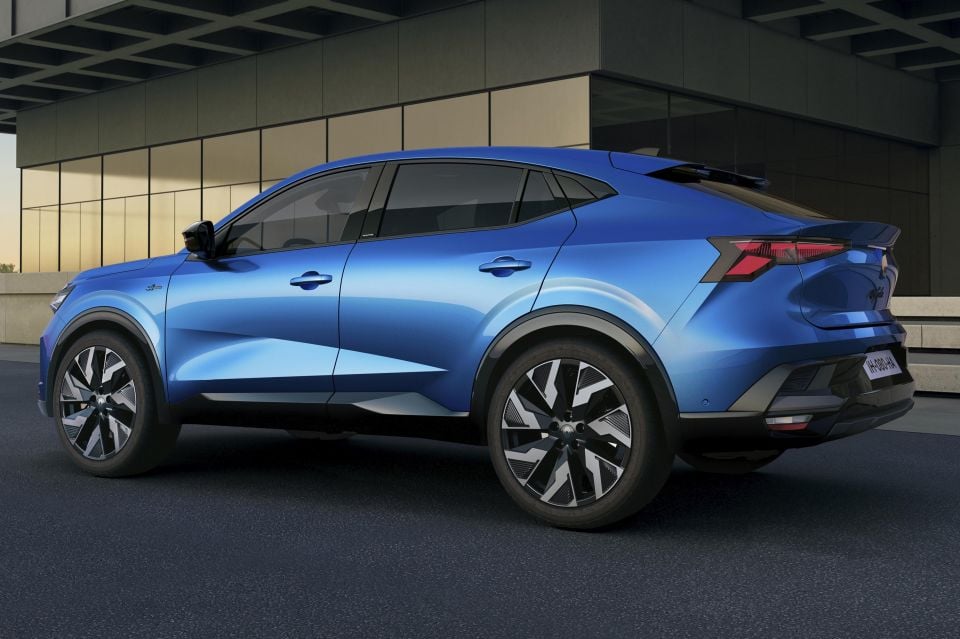
The company has detailed two powertrains.
The Rafale will launch with a 149kW hybrid powertrain, featuring a 96kW/205Nm turbocharged Miller-cycle 1.2-litre three-cylinder engine mated with a 50kW/205Nm electric motor, a 25kW/50Nm high-voltage starter generator, a 2kWh lithium-ion battery and a clutchless multimode automatic dog box.
The latter is derived from Formula 1 technology and combines the electric motor’s two ratios with the combustion engine’s four ratios, allowing for 15 possible ways of combining the motors and engine.

Renault says this powertrain allows you to drive in electric mode 80 per cent of the time in city driving.
This will be followed by a 224kW all-wheel drive plug-in hybrid set-up, which features an additional electric motor on the rear axle.
The Rafale features a multi-link rear axle down back and different spring, shock-absorber and roll-bar settings to other CMF-CD vehicles, while Renault has upgraded its 4CONTROL all-wheel drive system for superior low-speed handling and high-speed agility.

When turning at speeds of less than 48km/h, the rear wheels will turn at up to one degree in the same direction as the front wheels; at low speeds, the rear wheels turn up to five degrees in the opposite direction.
“The all new Rafale interlinks two Renault lineages: its motorsports heritage from the high-performance saloons like the R21 Turbo and Safrane Baccara Biturbo on one side, and the innovative spirit that brought about concepts like people carriers, turbo technology and E-Tech hybrid powertrains on the other,” said Grégory Launay, product performance leader for the Rafale.
Renault says the Rafale is the first production vehicle entirely designed according to company design head Gilles Vidal’s new design language.

There’s a sleek coupe SUV silhouette with muscular shoulders, and Renault says it has curved the roofline so that there’s still plenty of headroom for rear-seat occupants plus visibility out of the rear.
The rear window is tilted at 17 degrees, “exactly right” for aerodynamic efficiency and rendering a rear wiper unnecessary.
Renault also says it has given the Rafale a wider track for a more substantial appearance.
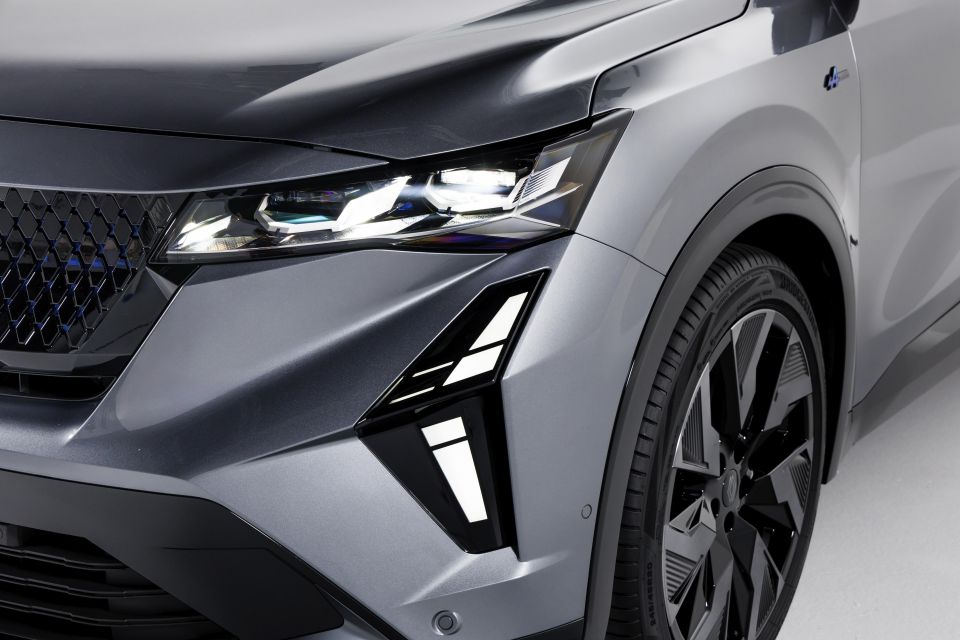
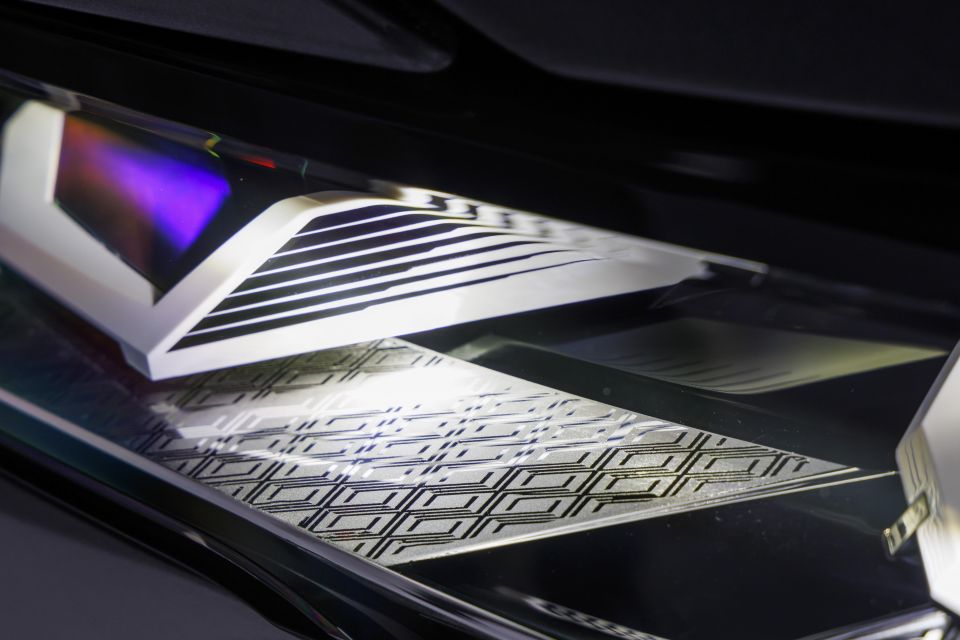
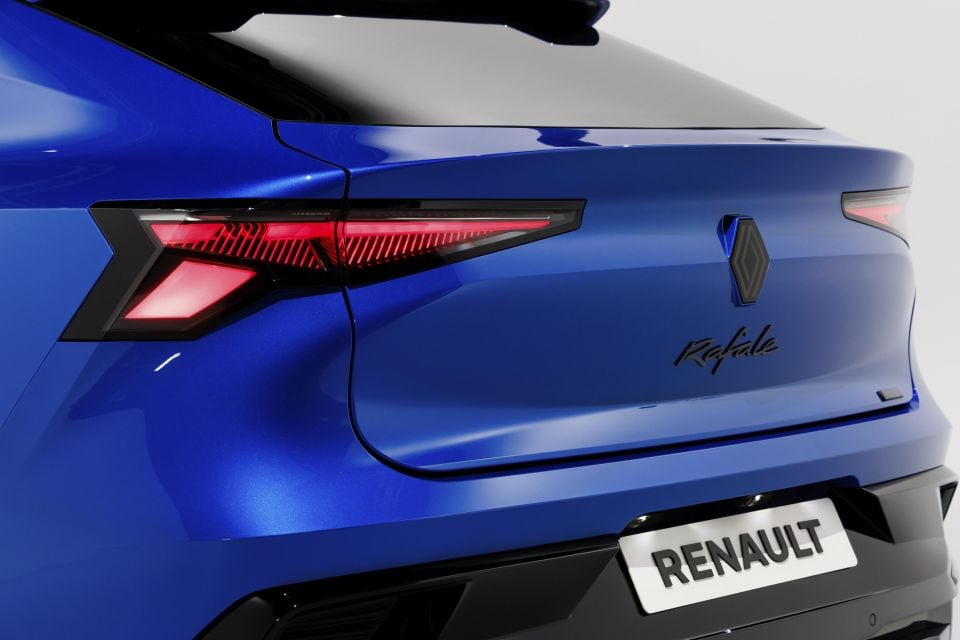

The grille features a three-dimensional tessellating diamond pattern, mirroring the Renault logo and a nod to optical artists like Victor Vasarley whose son Yvaral Vasarely designed the company’s 1972 logo.
The Rafale uses new “signature” lighting elements up front that first debuted on the facelifted Clio, which again tie in with the Renault logo. LED headlights are standard, with matrix LED headlights found higher in the range.
The tail lights are spaced far apart to “look like sculptures embedded in the edges” and to enhance the car’s visual width, and are inspired by Chinese tangram puzzles. When off, they have a “floating ice-cube” effect.
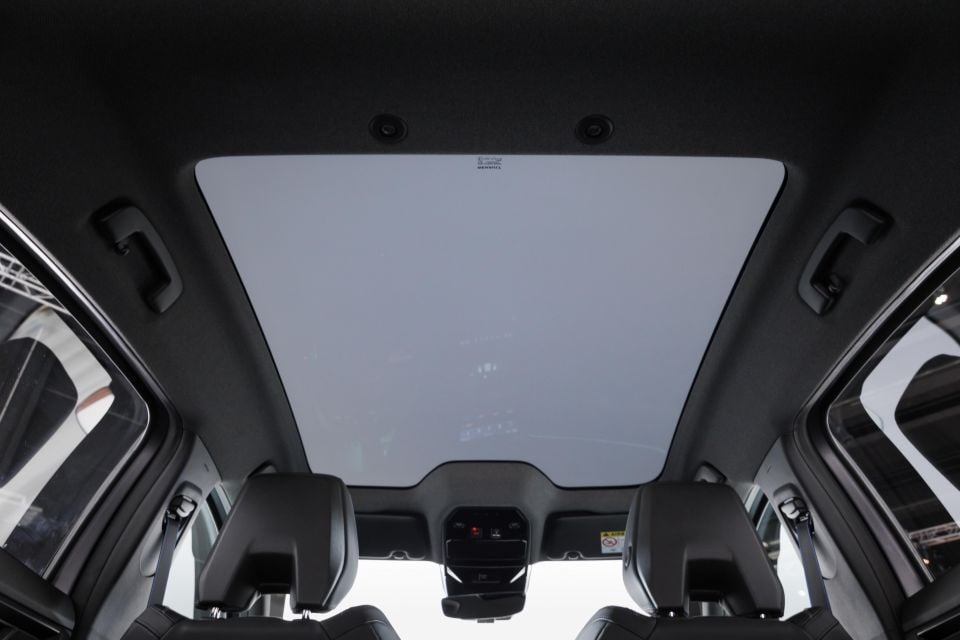
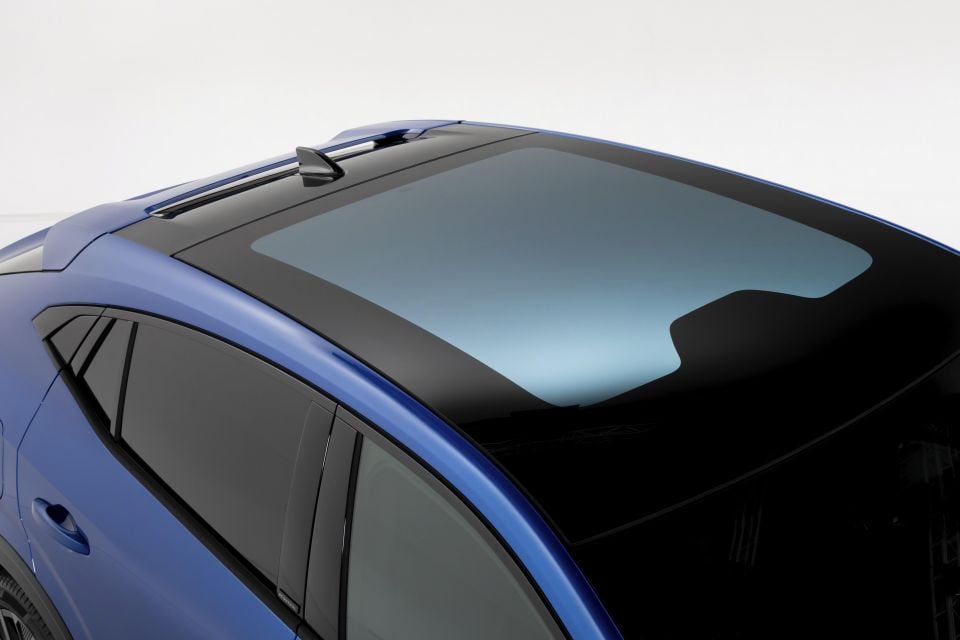
The Rafale is also the first vehicle from the Renault brand to be finished in Alpine Blue, which the company says is a shade deeper than the blue on the Alpine A110 sports car.
It’s the first production vehicle to use a new Solarbay darkening panoramic glass roof developed by Saint-Gobain.
Measuring 1470mm by 1117mm, its AmpliSky Polymer Dispersed Liquid Crystal (PDLC) technology replaces standard screens with an active system that darkens each segment on demand using electric fields to displace molecules.

It allows, for example, for front-seat occupants to have their half of the roof darkened or lightened, and the rear-seat occupants to have the inverse. Similar technology is used in the BMW iX and upcoming Cadillac Celestiq.
Rear-seat passengers also get a trick centre armrest, with two USB power outlets, storage space for tablets and smartphones, and two foldout screen stands.
Renault says the Alcantara upholstery is made of 61 per cent recycled material, while there are new, more heavily bolstered seats with decorative edging (‘gadrooning’) reminiscent of biker jackets.
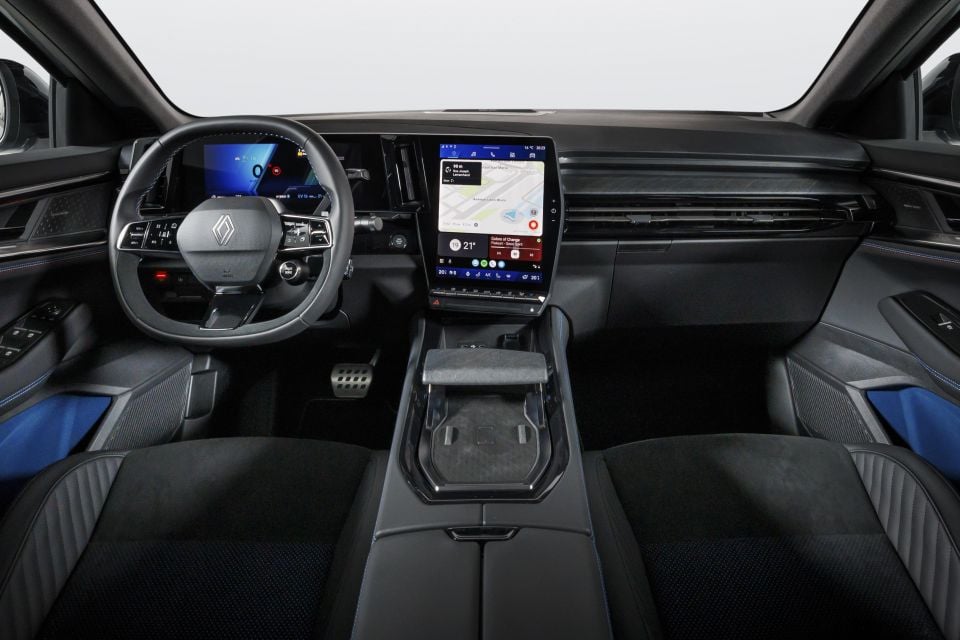
On Esprit Alpine models, the Alcantara is perforated to reveal iridescent blue fabric lining. The Alpine logo on the seats also lights up and pulsates, and can change colour based on the drive mode.
Appliques made from dyed cork and slate are used in the cabin.
The Rafale uses Renault’s OpenR digital cockpit, as seen in the Megane E-Tech Electric, which consists of a 12.3-inch digital instrument cluster and a 12-inch portrait-oriented infotainment touchscreen running Google built-in and Android Automotive 12.
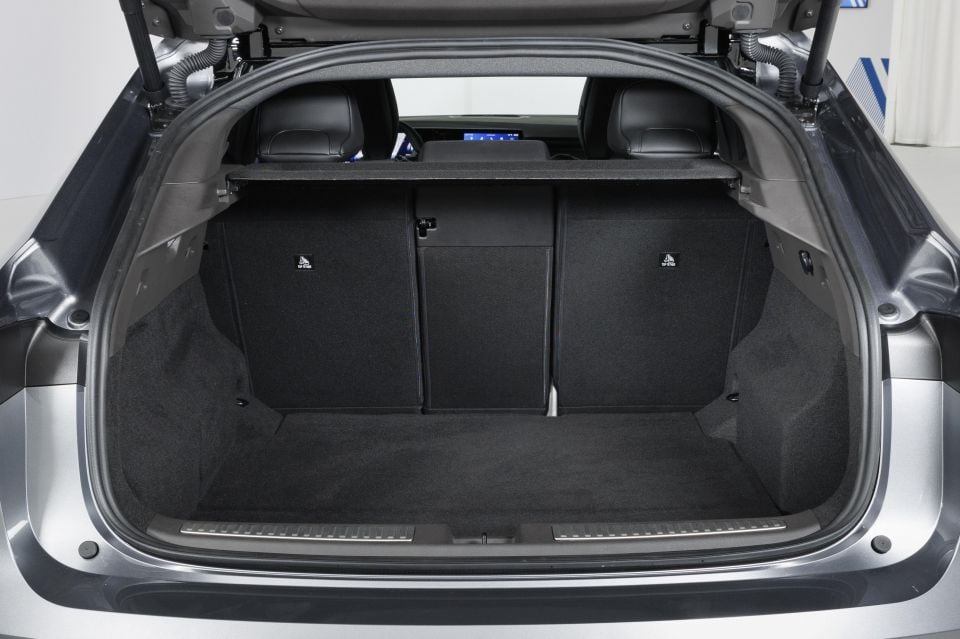
This means a full suite of Google apps are available, including Google Assistant. There’s also wireless connectivity for Android Auto and Apple CarPlay.
A 9.3-inch head-up display sits in front of the driver, while the colour-adjustable ambient lighting offers an automatic mode that adjusts every 30 minutes to suit your body clock and the time of day – for example, it uses cold colours during the day and warm ones at night.
Down back, there’s 647L of boot space.

Available safety equipment includes autonomous emergency braking (forward and reverse), adaptive cruise control with stop/go, lane-keep assist, a surround-view camera, and rear cross-traffic alert.
Renault’s new Active Driver Assist system also features, combining adaptive cruise control and lane-keep assist for Level 2 autonomous driving on all types of roads.
The company has yet to confirm any of its new CMF-CD SUVs – the two-row Austral, three-row Espace, and this Rafale – for Australia.
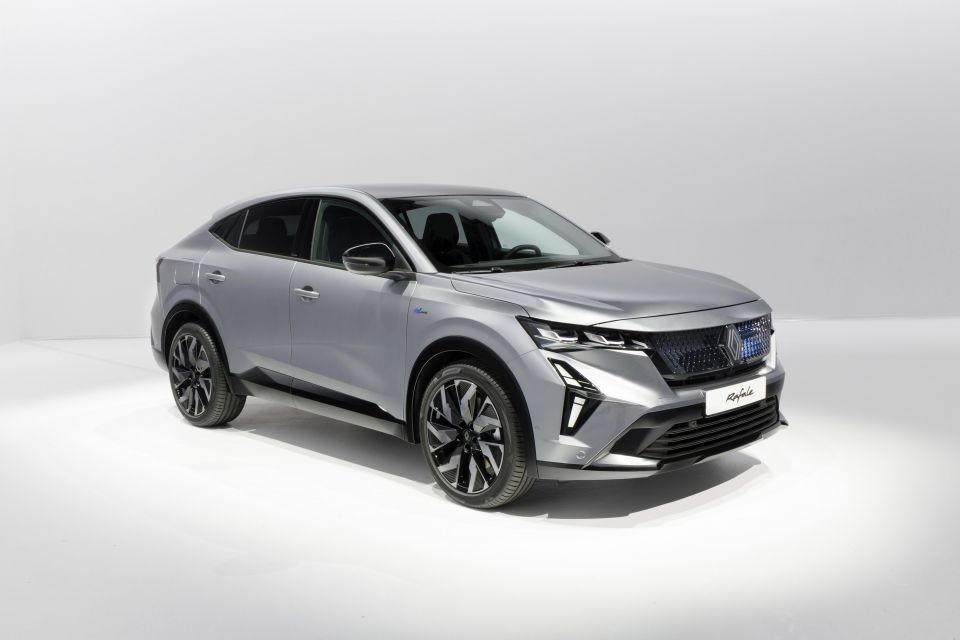
Renault continues to sell the mid-sized Koleos in Australia, however its future is uncertain.
It’s produced by subsidiary Renault Korea Motors, which is set to begin production of vehicles on Geely underpinnings following the Chinese company’s acquisition of a stake in the firm.
The Rafale replaces the defunct Talisman sedan and wagon as Renault’s flagship in Europe, although the sedan continues to be built and sold in Korea as the SM6.
Where expert car reviews meet expert car buying – CarExpert gives you trusted advice, personalised service and real savings on your next new car.
William Stopford is an automotive journalist with a passion for mainstream cars, automotive history and overseas auto markets.


Max Davies
22 Minutes Ago


William Stopford
16 Hours Ago


Ben Zachariah
17 Hours Ago


Derek Fung
18 Hours Ago


Matt Campbell
1 Day Ago


William Stopford
2 Days Ago